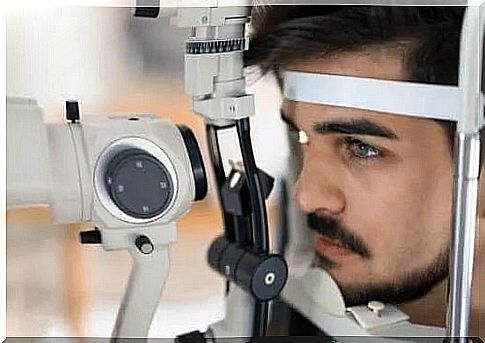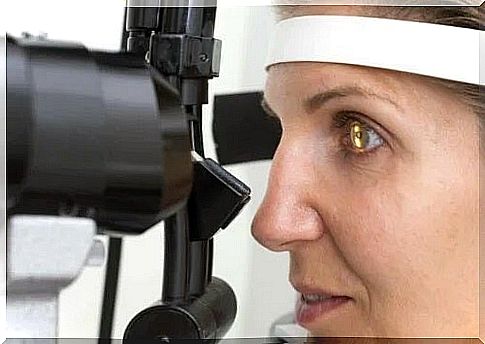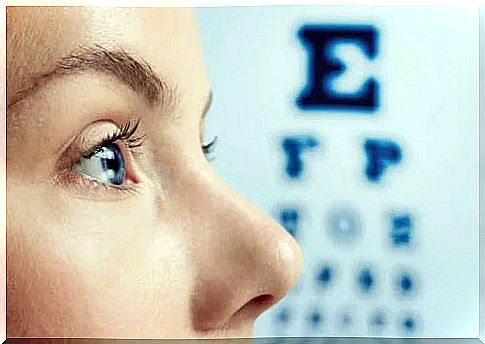Symptoms And Treatment Of Retinitis Pigmentosa

The disease known as retinitis or retinitis pigmentosa is a group of pathologies that have in common a genetic change that alters the reception of light in the retina. The cells of the fundus of the eye undergo progressive degeneration as the pathology evolves. In this article, we will discuss the symptoms and treatment of retinitis pigmentosa.
Retinitis pigmentosa is a rare disorder, with an incidence of 1 in 3,000 people. It is a genetic disease if we consider all the dystrophies transmitted from parents to children. What are its causes? Keep reading to find out!
Causes of retinitis pigmentosa
Even so, in one-third of patients, the exact origin of the disease cannot be determined. Undoubtedly, the condition is genetic, but it is impossible to reach the mutation that causes cell degeneration.
The inheritance of the disease was classified into three groups because of this variability:
- Through the X chromosome. In these cases, only men have symptoms, while women are carriers and never develop the pathology. Unfortunately, they transmit the disease to male children.
- Dominant transmission. This means that a certain gene is always expressed. In the case of this type of retinitis pigmentosa, all generations in the same family end up losing their sight.
- Recessive transmission. Unlike the previous case, this gene does not always manifest. Parents may have symptoms, their children may not, and grandchildren may.

The progression of retinitis pigmentosa gradually leads to vision loss. However, we are not always talking about the same type of loss. The most common forms are:
- Color confusion. This is similar to color blindness, and patients confuse one color with another or do not identify the one indicated correctly.
- Loss of central vision. This is the view we use the most for tasks that require concentration over a short distance. In fact, reading becomes difficult if the patient loses this ability. The condition is often confused with farsightedness – especially if the person is over 40 years old.
- Tunneled view. This is the opposite of the previous process. The patient loses the ability to distinguish shapes and colors at the periphery of the visual field. Thus, he will see only what is in the center and very close. The name “tunnel” is related to the sensation experienced by those who suffer from this problem. It is not the only symptom typical of retinitis pigmentosa and is therefore often confused with other health problems.
- Decreased ability to see in the dark. This is one of the most common manifestations and therefore the one that most guides the diagnosis. The patient can normally see during the day, but tends to become blind when it gets dark or when the light is off in the room.
Diagnosis of retinitis pigmentosa
The first thing the doctor considers is the suspicion of retinitis pigmentosa. If a person has a family history of retinitis pigmentosa, the doctor will investigate the situation in detail. Pregnancy becomes more difficult if there are no previous records of the disease in parents or grandparents.
The doctor will request a genetic test after analyzing the symptoms. The test looks at the composition of the genes to locate those that are defective and could explain the disorder.
The doctor may also request an electroretinography, a measurement of the electrical activity of the retina and also an optical coherence tomography. The latter is a series of high-definition images of retinal tissue.
The visual field is a test that is always performed in ophthalmology and does not help establish the diagnosis. It is useful only to determine the stage of the disease based on the remaining visual capacity.

Treatment of retinitis pigmentosa
High doses of vitamin A in the chemical form of palmitate have been successfully tested. However, it is not clear whether this is an effective treatment or whether the side effects of these concentrations do not pose a risk to other organs, such as the liver.
Doctors also prescribe anti-inflammatory drops if there are annoying symptoms, such as itching, pain or red eyes. These drugs are only for relief, but they are far from options for long-term disease management.
In addition, there is the option of surgery in specific cases (for example, if the disease is accompanied by cataracts). The artificial retina implant is still being studied to determine its effectiveness.
The importance of prenatal medical examinations
Ask your doctor if you experience eye symptoms or notice that you do not see as well. The ophthalmologist will know how to approach the problem correctly.
We hope you enjoyed this article!









